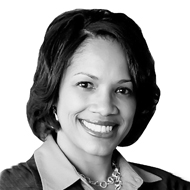A Money Lesson from My 8-Year-Old Daughter

I'm a financial planner. I'm also the mother of an eight-year-old girl. My work and my family are two different parts of my life, but they have something in common: Whether I'm with my clients or my daughter, I'm always conscious of financial lessons that I want to teach — and I'm always wondering whether those lessons will sink in.
That's why I want to share a moment I had with my daughter in April. As a treat, we visited New York City over her school's spring break. We were in Times Square, inside one of her favorite stores in the world, Toys 'R' Us, and she was trying to decide how to spend some of her money.
She spent some time watching a demonstration of a fingernail design set — one she could use to paint and draw on her nails. The more she watched, the more I was sure that my young fashion diva would be enticed into buying the design kit. Finally, she asked the price. It was more than $20.
“I am not spending my money on that!” my daughter cried.
Her declaration was music to my ears. It wasn't because I didn't want her to spend any money; it was because she had demonstrated that she was thinking about how she wanted to spend her money — and how she didn't want to.
So maybe some of her money lessons had sunk in. On our daughter’s eighth birthday, my husband and I had opened a checking account for her as the culminating event of the celebration. She was thrilled by the idea of knowing how much money belonged to her. Since she was an exceptional purse-carrying math student, the timing was right to put her skills to work.
My husband and I set the money rules. As she received gifts, we decided what amount should be shared (as charity), saved (for college), and spent (consumption). Over the following months, she consulted us on each of her purchases, gathering data before buying.
It didn’t take long for her to realize that the money left her account more rapidly than it was added to her balance. This dilemma created two necessities: (1) careful consideration of what and when to buy (so long, instant gratification!); and (2) creative thinking about replacing and growing her funds.
Many adults struggle with the same money lessons that our daughter is facing. Turning income into wealth while enjoying life is a balancing act with many twists and turns along the way. Keeping your balance requires a clear vision of goals and values, the diligent use of resources, and an acceptance of the relationship between time and money.
As a financial planner, I see a few key indicators of how well adults have applied these money lessons to their lives:
- Is their lifestyle sustainable? A client's spending plan and personal balance sheet offer insights into the client’s use of income to build wealth. I have new clients do a "money rhythm" exercise: They fill out a calendar showing when income arrives each month, and how much they receive; they also note the timing and amount of their regularly recurring expenses, such as the rent or their mortgage payment. This gives me a quick picture of their situation, and helps me see whether any cash-flow problems stem more from their core expenses or from discretionary spending.
- Are they maximizing financial strategies? Securing appropriate insurance and engaging appropriate tax, estate, investment, and retirement strategies will help to protect and grow a client’s hard-earned income and accumulated wealth. For me, the sign that new clients are on the right track is that they're aware of benefits offered to them in the workplace and are taking advantage of them. People who have come from a background where they are exposed to such issues have often gone beyond that. Other people just have their head in the sand.
- How do they balance time and money? The earlier that clients start saving, the more lifestyle and career options that are available to them. For me, the key indicator of whether people understand this is emergency savings. A young adult may have a lot of student debt, but if he or she has $5,000 in the bank — maybe a month or two of funds — it's a sign that he or she knows the importance of having a floor of safety.
I wonder if my third grader knows just how valuable it is to have learned what she already knows about money. I do.
--------------------------------------
Lazetta Rainey Braxton is a certified financial planner and CEO of Financial Fountains. She assists individuals, families, and institutions with achieving financial well-being and contributing to the common good through financial planning and investment management services. She serves as president of the Association of African American Financial Advisors. Braxton holds an MBA in finance and entrepreneurship from the Wake Forest University Babcock Graduate School of Management and a BS in finance and international business from the University of Virginia.
